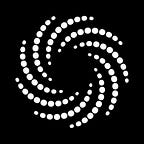From Astrology to AI: A Brief History of Weather Forecasting
Humans have attempted to predict the weather for thousands of years. It’s easy to see why: the weather has always been a paramount factor in hunting, agriculture, fishing, warfare, sea navigation, land travel, and general day-to-day safety. Some of history’s greatest minds have left their marks on the weather forecasting knowledge that we are lucky to have today.
Take Meteum, our cutting-edge weather forecasting platform capable of predicting atmospheric processes with accuracy so high that it would be unfathomable to someone from a century ago. Today, we have tools and methodology that simply didn’t exist a mere few decades ago, such as AI and machine learning. Besides, meteorology always goes hand in hand with advancements in natural sciences, especially physics and mathematics.
But even hundreds of years before the significant breakthroughs that made modern weather forecasts possible, people could predict rain and drought, often reliably enough to satisfy many of their needs.
Ancient Times and the Middle Ages
Let’s go all the way back to the dawn of human civilization. The earliest known descriptions of cloud formation and the season cycle date back to as early as 3000 BCE and belong to the Upanishad civilization in what is now modern-day India. Later on, Babylonians observed cloud patterns and used astrology to predict the weather.
Circa 350 BCE, the Greek philosopher Aristotle was among the first to describe weather patterns in his work Meteorologica. Not long after, his pupil Theophrastus wrote The Book of Signs, explaining many different telltale signs that helped predict the weather. These two manuscripts had a massive impact and would stay relevant for thousands of years to come. Another great philosopher from Greece, Archimedes, studied the concept of buoyancy — a crucial part of understanding the formation of clouds.
In the run-up to the medieval era, Chinese and Roman scientists defied the mythology behind rainfall, introducing the revolutionary idea that it was caused by water evaporation, not by divine will.
The Middle Ages produced countless groundbreaking discoveries that helped advance meteorology. Scholars from the Islamic world, Europe, India, and China made tremendous contributions to this nascent science over this millennium.
Between the 17th and 19th Centuries
Meteorological science developed in leaps and bounds during this time with paradigm-shifting inventions. From Galilei’s thermoscope to Wren’s tipping bucket rain gauge to de Saussure’s hygrometer to Fahrenheit’s thermometer, there was no shortage of new tools that helped take accurate atmospheric measurements. Torricelli’s invention of the barometer in 1643 was especially important: the first primitive data-driven forecasts owe it to this device.
Couple these inventions with such events as Ferdinando II de Medici’s establishment of the first ever weather observing network in Europe, the discovery of oxygen and nitrogen, and the introduction of the Celsius scale — it was only a matter of time before accurate weather forecasting became reality. There was only one obstacle stifling the progress: now that we had the tools and the theoretical base for monitoring the atmosphere, we just needed a way to transfer information quickly and reliably over large distances.
Approaching Modern Weather Forecasting
1835 was the year the electric telegraph was invented. Near-instant communication allowed relaying information about current weather conditions across hundreds of miles — it was the breaking point for meteorology as a whole. Still, the first men to establish weather forecasting as a proper scientific field were British officer Beaufort and his mentee FitzRoy. Beaufort developed the Wind Force Scale, while FitzRoy was appointed chief of the Royal Navy’s department, managing weather stations around the country and later becoming the Meteorological Office. FitzRoy also coined the phrase “weather forecasting” and published The Weather Book, which was way ahead of its time.
But still, the weather forecasting of that time was rather simplistic and mostly boiled down to simple observations. That’s where the numeric weather prediction’s story begins: several scientists demonstrated that predicting weather using equations was possible and yielded significantly better results than the subjective approach of the past. However, due to the enormous amounts of raw calculations needed for this method, it would take almost a century since the early attempts for it to finally become feasible.
Enter the 20th century, when this neat little thing known as an electronic computer made its first debut. In 1922, Richardson produced the first ever computerized weather forecast. After that, it didn’t take long for mathematical models to become the primary method for weather prediction: by the 1950s, computers handled the entirety of weather forecasting.
Radars and weather balloons allowed meteorologists to collect immense amounts of weather data over vast areas of the Earth’s surface and therefore produce more accurate forecasts. 1960 signified the launch of the first meteorological satellite, which brought coverage to a whole new level.
Finally, the internet, artificial intelligence, and powerful hardware were the things that made real-time forecasting a dream come true. With the wide adoption of machine learning come 2015, the modern age of meteorology truly began.
We can’t even imagine what other milestones the future holds for weather forecasting, and it’s hard to contain our excitement! But for now, let’s stick to the present — what we have today is already impressive.
Meteum, our weather forecasting platform powered by big data, machine learning, and user reports, produces accurate hyperlocal nowcasts and long-term forecasts. History has proved that weather forecasting is vital for most industries: we ensured that our system could be tailored to any use case under the sun.
Check out our business solutions at meteum.io and find out how accurate forecasts can help your enterprise alleviate weather-related risks, keep costs down, control supply, and schedule outdoor work the most optimal way.
